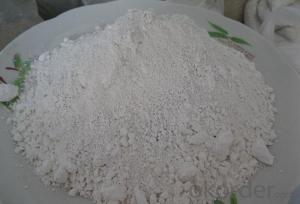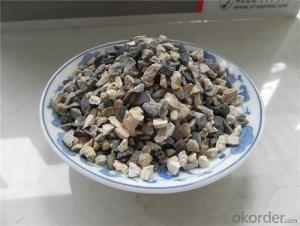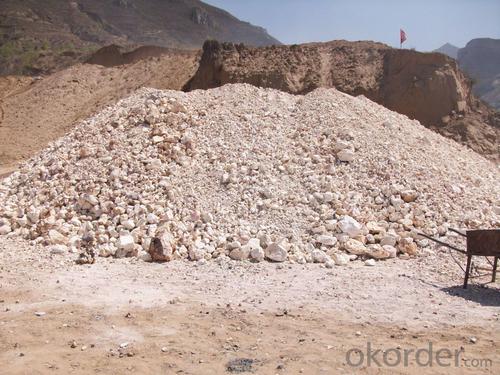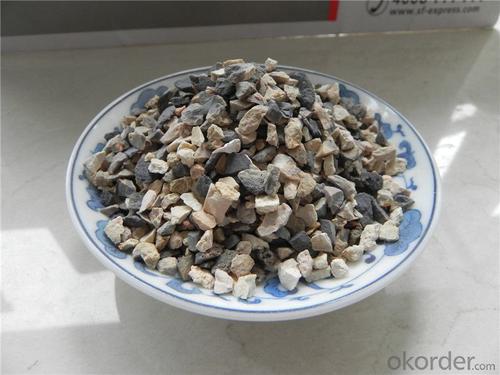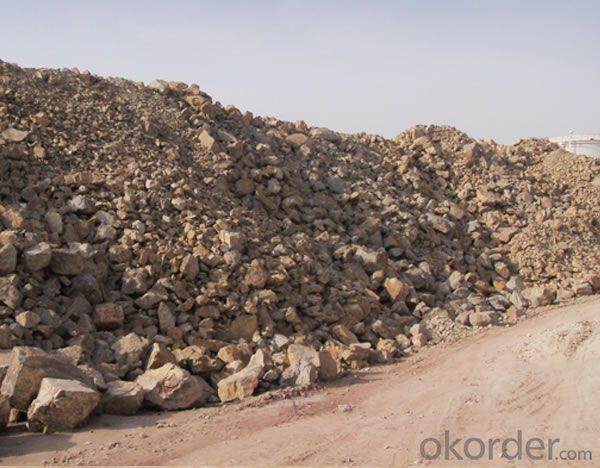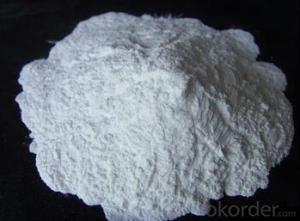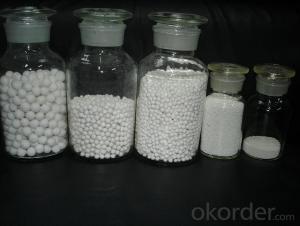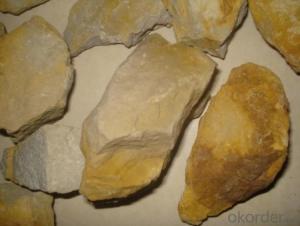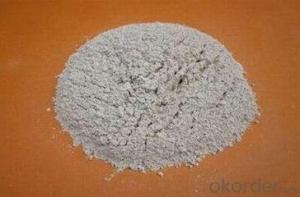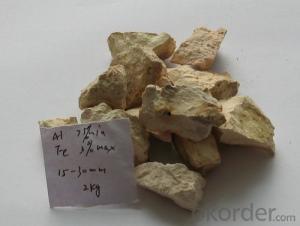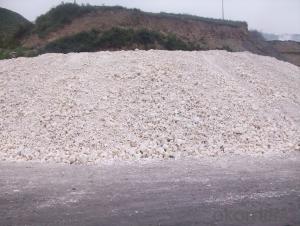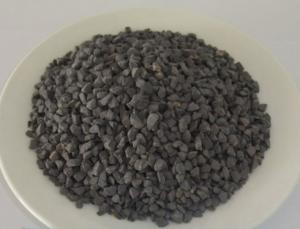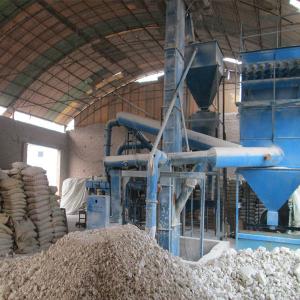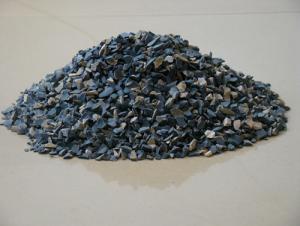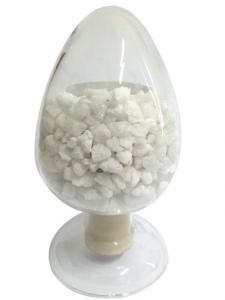Raw Materials for Refractory:75% Rotary/Shaft/Round Kiln Alumina Calcined Bauxite
- Loading Port:
- Tianjin
- Payment Terms:
- TT or LC
- Min Order Qty:
- 25 m.t.
- Supply Capability:
- 3000 m.t./month
OKorder Service Pledge
OKorder Financial Service
You Might Also Like
75% Rotary/ Shaft/ Round Kiln Alumina Calcined Bauxite Refractory Raw Material
Specifications
1. We directly supply calcined bauxite
2. Al2O3:70%/75%/80%/85%/86%/88%/90%
3. Size:0-1-3-5-8-10/200mesh/325mesh/400mesh/500mesh
Size:
Lumps /Grains:0-1mm,1-3mm,3-5mm,5-8mm /Powders:100mesh, 200mesh,325mesh
Product Description:
Bauxite, alumina or bauxite miner , main ingredients are aluminum oxide, hydrate alumina containing impurities,
is an earthy mineral.White or grey, brown yellow or light red by iron.From 4 to 3.9 g/cm3 density, hardness, 1 ~ 3, opaque, very brittle.
Very difficult to melt.Insoluble in water, soluble in sulfuric acid, sodium hydroxide solution.Mainly used for aluminium, refractory material.
Calcined Bauxite Grade:
Shaft Kiln Bauxite
Rotarty Kiln Bauxite
Round Kiln Bauxite
Packaging & Delivery
Packaging Details: In bulk or in 1-1.25mr bag
Usage
(1) aluminium industry. Used in national defense, aerospace, automotive, electronics, chemical industry,
daily necessities, etc.
2 precision casting. Alumina clinker made after the mould precision casting processed into fine powder.
Used in military industry, aerospace, communications, instrumentation, machinery and medical equipment department.
(3) is used for refractory products. High bauxite clinker refractoriness is as high as 1780, chemical stability strong,
and good physical properties.
(4) aluminum silicate refractory fiber. With light weight, high temperature resistance, good thermal stability,
low thermal conductivity, heat capacity is small and the advantages of resistance to mechanical shock.
Used in iron and steel, nonferrous metallurgy, electronics, petroleum, chemical, aerospace, atomic energy,
defense and other industries.
Product Pictures:
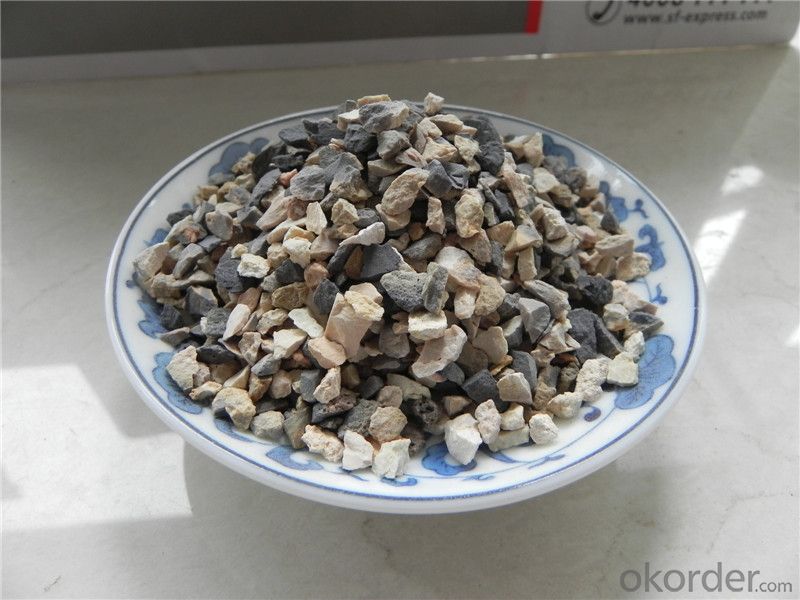

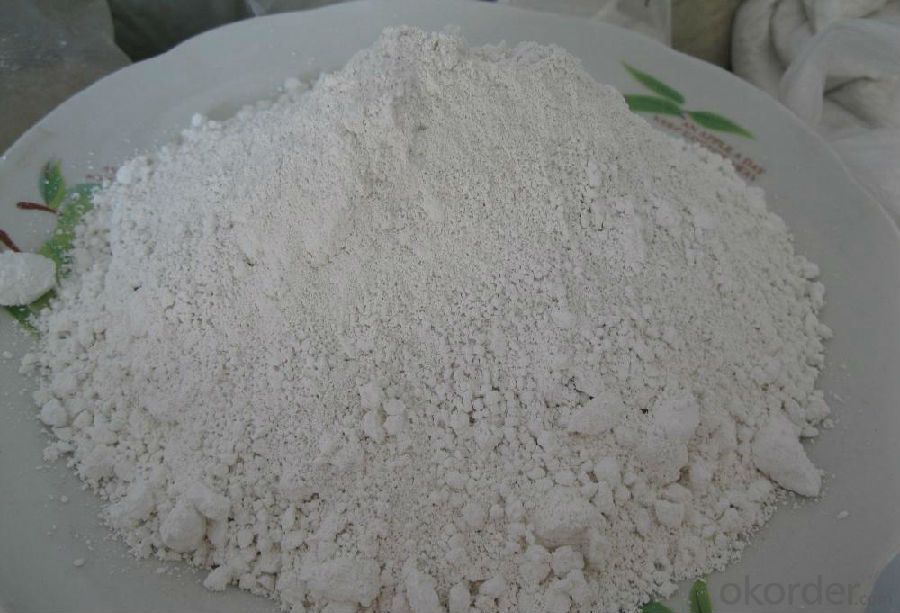
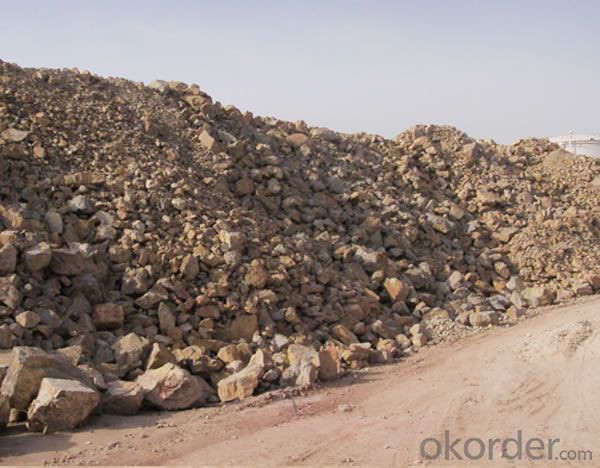
Our Service:
1. Your inquiry related to our products or prices will be replied in 24hours.
2. Manufacturer with large capacity, ensure the fast production cycle after confirmed the order.
3. Our professional technicians will answer your entire enquiry in patient.
4. To meet the refractory solutions, we can serve as your instructions.
5. Protection of sales area and private information for our entire customer.
If you’ve kind enquiries, please don’t hesitate to let us know. ^_^
- Q: Preparation of refractory clay
- Is it to make refractories? Add some andalusite to the refractory mortar will improve the effect.
- Q: How to distinguish between class A fire resistant door and class B fire resistant door from appearance ? What are the differences between the two refractories? Thank you !
- First, the materials are the same. But the thickness of grade A and grade B fire doors is different juding from their appearances. Grade A :50. Grade B:45. Added question: Do you refer to steel fire door?
- Q: How many refractory materials does the annual output of 1 million tons of coke oven require?
- Refractory material is an important material used in iron and steel industry, it is mainly used in steel-making furnace, furnace lining, loading and transportation of metal and slag ladle lining, the furnace lining procedure of billet heating, heat conduction and lining of blast furnace and the flue. So, to put it simply, we can think of it as a structural material, which can withstand a temperature of 260-1760 degrees centigrade.
- Q: what is the common materials for home fireproofing material?
- 1, lumber core 2,decoration panel 3 , plywood 4 density board 5,chipboard 6 fireproof?panel, 7.gypsum board Hope to adopt my opinion
- Q: What's the difference of fire-resistant material's density, specific gravity and bulk specific gravity?
- glass
- Q: What is the new fireproofing standard of external wall thermal insulation materials?
- 1, The height of fire barrier zone is not less than 300, and the thickness is same to the external insulation system; 2, the horizontal dividing joint should be set on the boundary between fire barrier zone and thermal insulation system; 3, Fire barrier zone is usually set in the horizontal direction, the fire barrier zone should be set above the door and window openings, the distance between the low edge of barrier zone and upward side of the hole should not exceed 500mm; 4, The construction of fire barrier zone insulating layer should carried on from bottom to top with EIFS insulating layer, which is not first leave the place in the EIFS insulating layer, and then paste fire barrier zone insulation board; 5, pasting the insulation board fire barrier zone insulation board and EIFS insulation board should be stitched closely, the width is more than 2mm gap application EIFS insulation materials or fire-retardant foam polyurethane padding;
- Q: What is shapeless refractory with high performance?
- The popular ones are: Non-cement fine powder bonded castable is a functional refractory castable with nano material introduced.
- Q: What's meaning of CN of fire-resistant material?
- The commonly used preparation methodsinclude shock compression, high-pressure pyrolysis, ion implantation, reactive sputtering, plasma chemical vapor deposition, electrochemicaldeposition, ion beam sputtering, , low-energy ion radiation, pulsed arc discharge,pulsed laser inducing, etc. But the compounding result of superhard materialis not ideal due to deposition of amorphous CN film, nanometer level sizedC3N4 crystalline grain set in the amorphous film and few large graincrystal.
- Q: Are the rubber insulation materials are refractory materials?
- It's not.
- Q: Who knows about the types of Dalian thermal insulating and refractory materials?
- There are many Dalian thermal insulation materials, which can be divided into organic and inorganic thermal insulation materials. Materials include inorganic thermal insulation materials, polyfoam, mineral wool products, foam glass, expanded perlite insulation products, gelatine powder EPS grain heat insulating slurry, sprayed mineral wool, thermal insulation product of foam cements, and vacuum thermal insulation board.
Send your message to us
Raw Materials for Refractory:75% Rotary/Shaft/Round Kiln Alumina Calcined Bauxite
- Loading Port:
- Tianjin
- Payment Terms:
- TT or LC
- Min Order Qty:
- 25 m.t.
- Supply Capability:
- 3000 m.t./month
OKorder Service Pledge
OKorder Financial Service
Similar products
Hot products
Hot Searches
Related keywords
